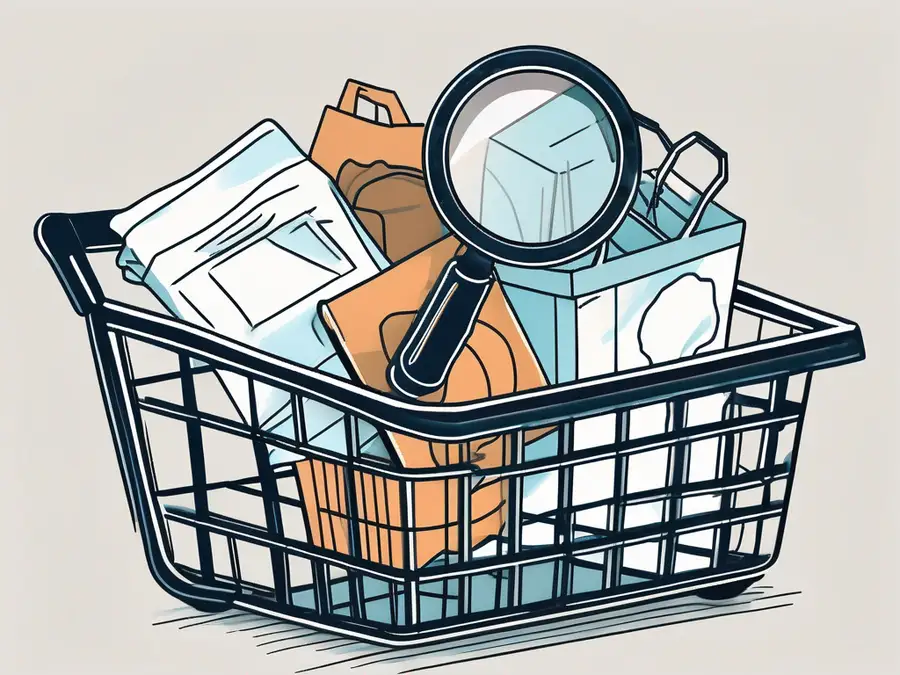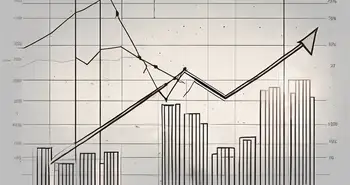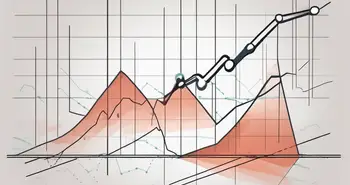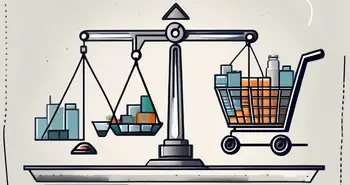Consumer Price Index: Tracking Inflation and Economic Health

The Consumer Price Index (CPI) is a vital economic indicator that measures changes in the cost of living over time. As an expert in the field, I'm here to provide you with a comprehensive guide on understanding the CPI and its significance in economic analysis. So let's dive in!
What is the Consumer Price Index?
At its core, the Consumer Price Index is a statistical measure that reflects the average price change of a basket of goods and services over a specific period. It helps us understand the impact of inflation on the purchasing power of consumers.
The Consumer Price Index, often referred to as the CPI, is a vital tool used by economists, policymakers, and analysts to gauge the fluctuations in prices of essential goods and services. This index is not only crucial for understanding inflation but also plays a significant role in shaping economic policies and business strategies.
Definition and Basic Explanation
The CPI represents the prices of a wide range of goods and services consumed by urban households. It covers various expenditure categories like food, housing, transportation, healthcare, and more. By tracking these prices, we gain insights into the rising or falling cost of living.
Moreover, the Consumer Price Index is calculated by comparing the current prices of the items in the basket to their prices in a base year. This comparison helps in quantifying the inflation rate and its effects on the economy, providing a comprehensive view of the overall economic health of a nation.
Importance of the Consumer Price Index
The CPI is of utmost importance for policymakers, businesses, and individuals alike. It helps the government determine the optimal level of monetary policy, such as interest rates and wages, to maintain stable economic growth. Businesses use it to analyze consumer behavior and adjust their pricing strategies accordingly. As individuals, we can plan our budgets better and understand how inflation affects our finances.
Furthermore, the Consumer Price Index serves as a crucial tool for adjusting income levels, such as social security benefits and tax brackets, to keep pace with the changing cost of living. This index also aids in international comparisons of price levels and inflation rates, enabling countries to assess their economic competitiveness and market stability on a global scale.
How is the Consumer Price Index Calculated?
The calculation of the Consumer Price Index (CPI) is a meticulous process that plays a crucial role in understanding the economy's inflation rate. Let's delve deeper into the intricacies of this calculation:
The Process of Data Collection
When it comes to data collection for the CPI, precision is key. Trained data collectors fan out across diverse urban areas nationwide, meticulously noting down prices from an array of sources. From bustling retail outlets to the virtual realm of online platforms, every price point is a piece of the larger CPI puzzle. This comprehensive approach ensures that the CPI accurately reflects the cost of living for the average urban consumer.
The Role of Goods and Services
The basket of goods and services that make up the CPI is a reflection of urban households' spending habits. It's a dynamic mix that mirrors the ebb and flow of consumer preferences and economic trends. From the staple necessities like groceries and rent to the indulgent pleasures of dining out and travel, this basket captures the essence of consumer life. By encompassing such a wide spectrum of expenditures, the CPI becomes a powerful tool for gauging real-world inflationary pressures.
Understanding Weighting and Indexing
Weighting and indexing lie at the heart of CPI calculations, lending a nuanced touch to the final index figure. Each item in the CPI basket is assigned a weight that mirrors its significance in the average consumer's budget. This weightage system ensures that essentials like housing costs carry more statistical heft than, say, the occasional movie ticket. By judiciously assigning these weights, the CPI can accurately reflect the changing landscape of consumer expenses. The index itself is a product of meticulous comparisons between current and past price levels, with adjustments made to account for the weighted impact of these changes.
Interpreting the Consumer Price Index
Once you grasp how the CPI is calculated, it's essential to know how to interpret the results. Let's explore how we can make sense of CPI reports:
Reading CPI Reports
CPI reports are typically published regularly by government statistical agencies. They provide insights into monthly, quarterly, or yearly changes in the cost of living. A CPI report may show that prices have increased or decreased from a certain period, allowing us to assess inflationary trends. By comparing these reports over time, we can identify long-term patterns and anticipate future price movements.
Inflation and the CPI
The CPI acts as a key measure of inflation, indicating how much purchasing power inflation erodes. By tracking inflation using the CPI, economists and policymakers can adjust monetary policies and anticipate potential economic challenges. Understanding the relationship between inflation and the CPI is crucial for gauging the overall health of the economy.
The CPI and Economic Policy
The CPI plays a pivotal role in shaping economic policies. Central banks use the CPI as a guide for setting interest rates, aiming to balance economic growth and price stability. Governments also utilize the CPI to calculate and adjust social security benefits, tax brackets, and other financial parameters that affect the population. Having a clear understanding of the CPI allows us to critically analyze economic policies and their implications.
Limitations of the Consumer Price Index
While the CPI is a valuable tool, it's important to recognize its limitations and potential areas of bias. Let's explore some significant concerns:
Issues with Accuracy
The CPI relies on data collection, and errors or omissions can occur, leading to inaccurate price measurements. Additionally, changes in the quality or packaging of goods are often not adequately captured. It's crucial to consider these limitations when interpreting CPI reports and making economic decisions.
Substitution Bias in CPI
The CPI assumes fixed consumer consumption patterns, failing to account for the fact that consumers can switch to cheaper alternatives when prices rise. This substitution bias can result in an overestimate of inflation. However, statistical agencies continuously refine their methodologies to lessen this bias.
The Problem of New Goods
The introduction of new goods and services can pose challenges for the CPI. In some cases, it takes time for these new items to be included in the basket, leading to a delayed reflection of the evolving consumer landscape. As experts in the field, we must remain vigilant and adapt CPI calculations to accurately reflect changes in consumer behavior.
Now that we have explored the intricacies of the Consumer Price Index, it's time to apply this knowledge in real-life situations. In my years of experience, I've witnessed how important it is to monitor the CPI trends closely and use them as a guide for financial planning. As prices fluctuate, it's crucial to adjust our budgets, investment strategies, and future financial goals accordingly.If you're still curious about a specific aspect or want to delve deeper into the topic of CPI, I've compiled some frequently asked questions below:
FAQ
Q: How often is the Consumer Price Index calculated?
A: The CPI is typically calculated on a monthly basis, providing regular updates on the cost of living. However, alternative measures like the Producer Price Index and the GDP Deflator are useful for other economic analyses.
Q: Can the Consumer Price Index accurately represent inflation for everyone?
A: While the CPI is a valuable tool, it may not capture individual experiences perfectly. Each person has a unique spending pattern, and the CPI represents an average of urban households. Nonetheless, it remains the most widely used measure of inflation and serves as a reliable indicator for economic analysis.
Q: Does the Consumer Price Index cover all goods and services?
A: The CPI aims to include a comprehensive range of goods and services; however, it may not capture every single item available in the market. Statistical agencies make a diligent effort to ensure the representation of various sectors, but the basket is periodically revised to reflect changes in consumer behavior.
Q: What are some alternative measures of inflation?
A: Apart from the CPI, other measures include the Producer Price Index (PPI), which tracks the price changes of goods and services at various production stages, and the GDP Deflator, which measures inflation in relation to the entire economy. Each measure has its strengths and weaknesses, and economists use them to gain a more holistic understanding of inflationary trends.
Q: How can the Consumer Price Index influence my personal financial decisions?
A: Understanding the CPI can help you plan your budget, set financial goals, and make informed decisions regarding investments and savings. By staying informed about inflationary trends and adjusting your financial strategies accordingly, you can protect your purchasing power and achieve long-term financial stability.
I hope this comprehensive guide has shed light on the importance of the Consumer Price Index and how it impacts our daily lives. Remember, becoming well-versed in understanding economic indicators empowers us to navigate the rapidly changing financial landscape with confidence and knowledge.
As you navigate the complexities of the Consumer Price Index and its impact on your financial decisions, consider the innovative trading solutions offered by Morpher. With Morpher, you can leverage the insights gained from understanding economic indicators like the CPI to trade across a variety of asset classes without the constraints of traditional investing. Embrace the power of blockchain technology for zero fees, infinite liquidity, and a unique trading experience. Sign Up and Get Your Free Sign Up Bonus today to transform the way you invest and stay ahead in the ever-changing financial landscape.

Disclaimer: All investments involve risk, and the past performance of a security, industry, sector, market, financial product, trading strategy, or individual’s trading does not guarantee future results or returns. Investors are fully responsible for any investment decisions they make. Such decisions should be based solely on an evaluation of their financial circumstances, investment objectives, risk tolerance, and liquidity needs. This post does not constitute investment advice.

Painless trading for everyone
Hundreds of markets all in one place - Apple, Bitcoin, Gold, Watches, NFTs, Sneakers and so much more.

Painless trading for everyone
Hundreds of markets all in one place - Apple, Bitcoin, Gold, Watches, NFTs, Sneakers and so much more.









